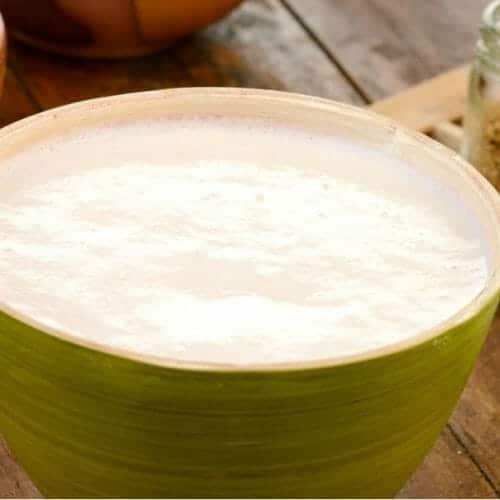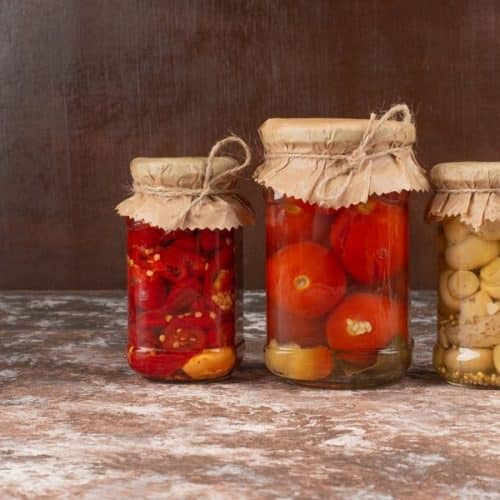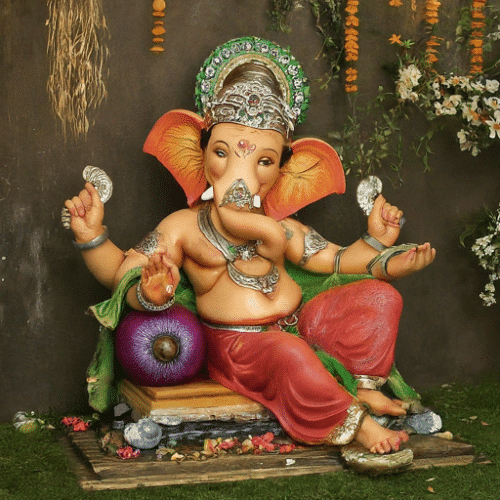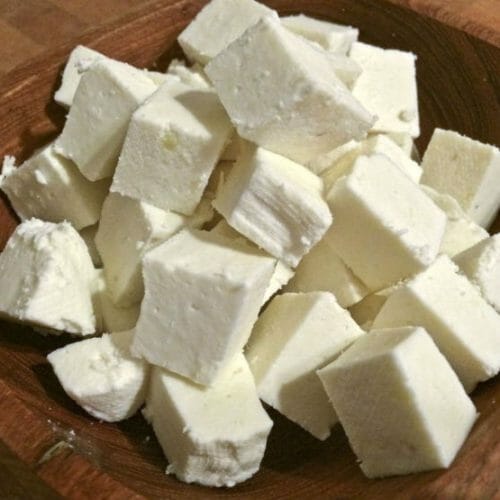Struggling to cook the perfect steak? So many cuts, seasonings, and cooking methods can feel overwhelming. This guide breaks it all down, helping you master how to cook steak like a pro. Learn about the best cuts, essential tools, seasoning techniques, and foolproof cooking methods to achieve a juicy, flavourful steak!
What Are the Different Types of Steaks and Their Characteristics?
A steak is a premium cut of beef taken from different parts of the animal, each offering unique texture, flavour, and cooking suitability. Fillet steak is the most tender, with a mild, delicate taste, making it ideal for fine dining. Sirloin steak balances tenderness and rich flavour, perfect for grilling or pan-searing. Ribeye steak is known for its marbling, which enhances juiciness and gives it a bold, beefy taste. T-bone steak combines a tender fillet and flavorful sirloin in one cut, offering the best of both worlds.
1. Fillet Steak
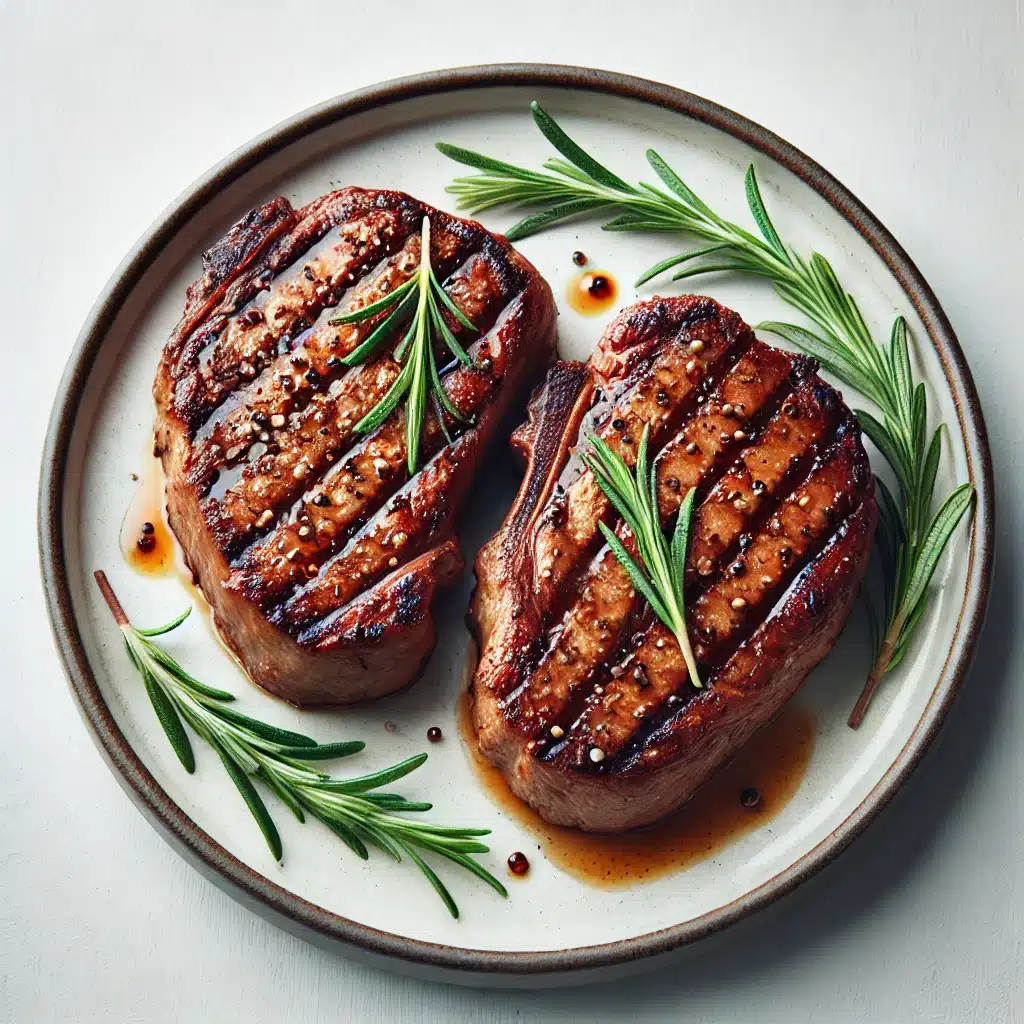
Two grilled steaks with rosemary on a plate
Understanding the qualities of different steak cuts is essential for cooking like a pro. The fillet steak, known as the ‘Queen of Steaks,’ is prized for its tenderness due to minimal muscle work. Its mild flavour complements various sauces and seasonings, making it versatile. It is best served in blue or red for maximum tenderness and flavour. Mastering the art of cooking fillet steak will impress guests and elevate culinary skills.
2. Sirloin Steak
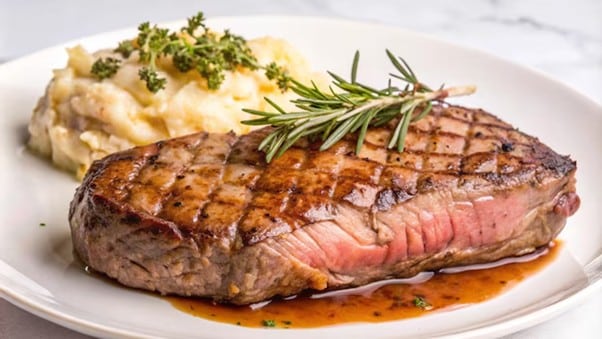
Grilled steak with mashed potatoes and rosemary
Sirloin steak strikes the perfect balance between tenderness and rich flavours, making it a favourite for grilling or frying. Positioned between the fillet and rib, It boasts lean meat studded with occasional fat, bringing out the beefy flavour. Fat marbling contributes to flavourful juices, and It is enjoyed for its robust taste profile. Thus, it is a favourite pick among steak enthusiasts.
3. Ribeye Steak
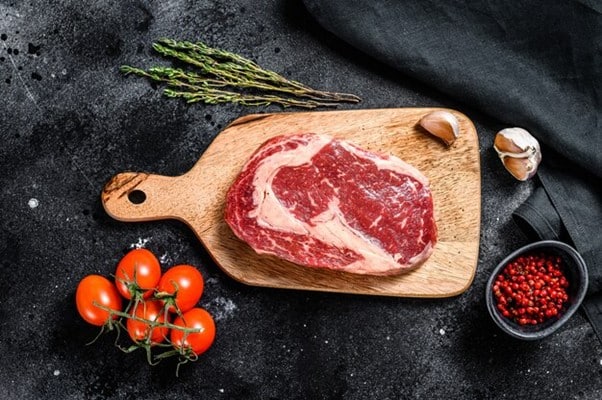
Raw ribeye steak on a wooden board with cherry tomatoes garlic peppercorns and fresh herbs
Ribeye steak, a BBQ favourite, comes from the upper rib cage. With rich marbling and a central eye of fat, it’s all about juicy flavours. The fat is rendered during cooking, basting the steak in its juices for a profound beefy taste. Specialised butchers often ‘French-trim’ ribeyes for an impressive presentation. Enjoy this prime steak with just salt and pepper seasoning.
4. T-Bone Steak
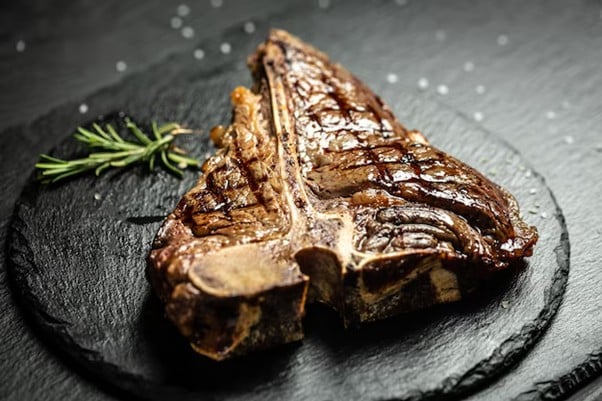
Grilled T bone steak on a black slate plate
For enthusiasts, the cookingonic cut combines tender sirloin connected by a T-shaped bone, providing a unique dual steak experience. The bone enhances flavour and texture. Grilling or broiling is best for cooking a T-bone due to the varying cooking times for each cut. The bone adds savoury richness, making it a heavenly delight.
Must-Have Tools for Cooking the Perfect Steak Like a Pro
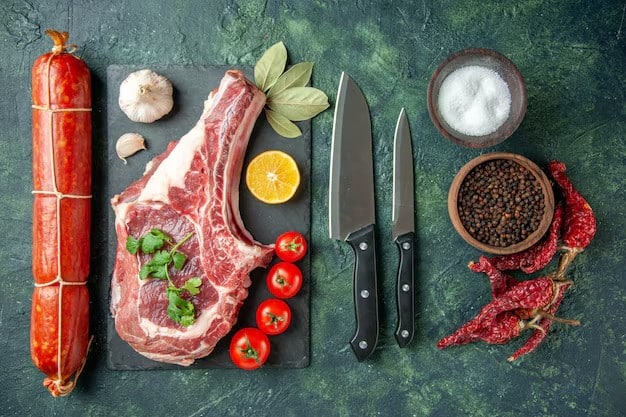
Various steak cooking tools displayed
To achieve the perfect steak, in addition to quality beef and cooking techniques, essential tools are crucial to avoid uneven cooking. You’ll need a heavy-based frying pan or cast-iron skillet for a perfect sear, a meat thermometer for precision cooking, and sturdy tongs to flip your steak without losing juices.
1. Choosing the Right Pan
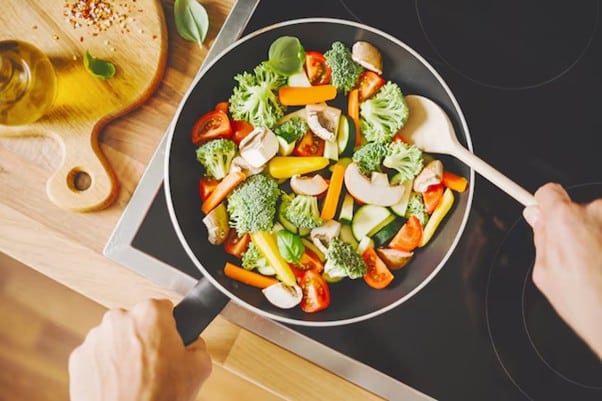
Colorful vegetables being saut ed in a black pan
Chefs favour cast iron pans and skillets when cooking steak because they retain heat and distribute it evenly. This results in a consistently well-seared crust on the steak. These pans can withstand high temperatures, ideal for achieving a mouthwatering charred finish. Using the right size cast iron pan prevents the steak from boiling in its juices, ensuring a deliciously brown crust instead of a grey surface.
2. Meat Thermometer
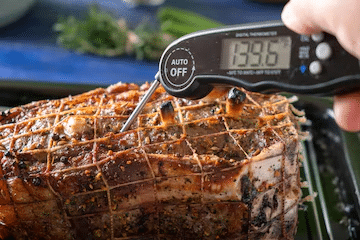
Roast meat checked with digital food thermometer
The most essential guideline when cooking steak is to avoid overcooking. A reliable meat thermometer is crucial for precise cooking, preventing chewiness and ensuring your steak is cooked to your preferred level of doneness. This method is the only way to minimise health risks from undercooked meat.
3. Tongs
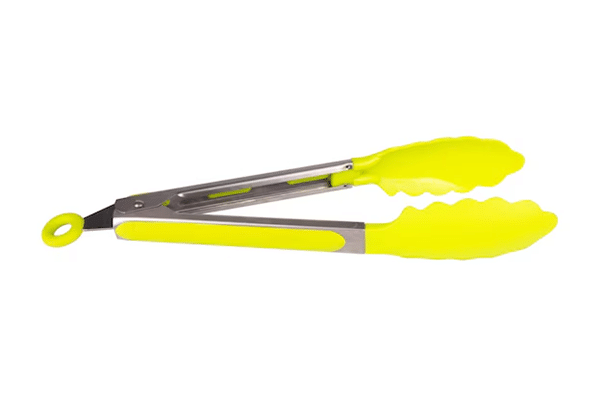
Bright yellow kitchen tongs with scalloped edges
A pair of long, sturdy tongs is part of the chef’s standard equipment while cooking steak. The benefit over forks or spatulas is that tongs allow for secure handling of the steak without piercing the meat, which may result in losing valuable juices. Tongs are quintessential for effortless flipping, rotating and transferring steak while providing a safe distance from the scorching hot pan, thereby preventing accidental burns.
How Should You Prepare Your Steak for Cooking?
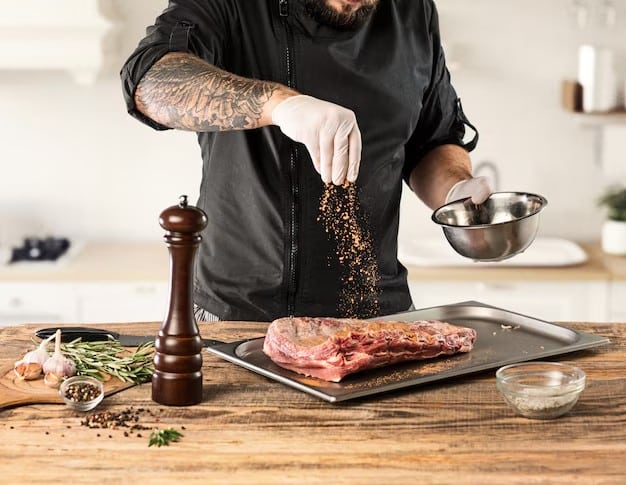
Steak cooking process in action
Preparing steak for cooking is crucial for achieving the desired flavours. Key steps include seasoning, drying for a good crust, and allowing the meat to reach room temperature. This ensures succulence, flavour complexity, and tenderness in every bite. Skip marinades and focus on these basics and quality cooking fat to let the beef flavour shine.
How to Season a Steak?
Seasoning is crucial for a delicious steak. Use coarse kosher sea salt and freshly ground black pepper generously for a flavorful crust. Salt your steak 40 minutes to 2 hours in advance to draw out moisture and reabsorb it for a deeper flavour. Pep up just before cooking for a rich crust.
Best Cooking Fats for Steak
The choice of fat when cooking steak is crucial for crust development, flavour, and health. Butter adds richness but has a low smoke point. Opt for high-smoke-point oils like safflower, canola, or peanut oil to prevent harmful free radicals. Extra virgin olive oil is best for low-heat cooking to avoid bitterness at high temperatures. See our table for the top steak-cooking fats.
How Can You Master the Steak Cooking Process?
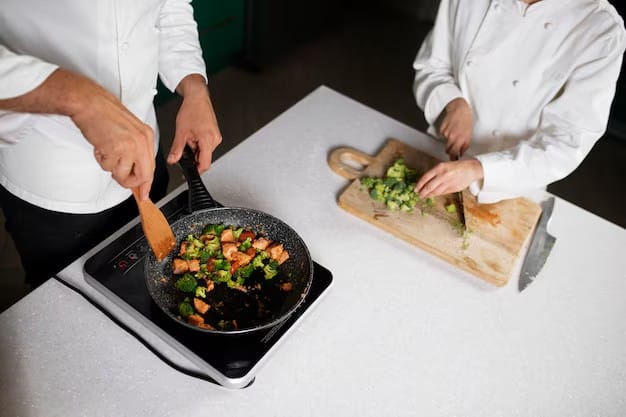
Cooking steak on a grill or pan
Cooking steak is an exciting process filled with sizzles, smells, and much time in anticipation. Master it by searing it over high heat, adjusting cooking time based on cut and doneness level, basting it with fat and butter, and using a thermometer. Knowing when it’s done and resting post-cooking are crucial for a sublime steak.
1. Sear the Steak
Searing a thicker steak is crucial for flavour development, creating a caramelised crust and juicy interior. Heat a skillet until hot but not smoking, then add the seasoned steak at room temperature. Allow it to sear uninterrupted for a deep, crusty sear. This process seals in juices, enhances texture, and creates complex flavours through the Maillard reaction.
2. Cook Times for Different Steak Cuts
Cooking steak like a pro requires understanding the cooking method and timing based on the cut’s thickness. Minimise heat exposure for tender cuts of steak like fillet steak, while tougher cuts like flank steak need longer cooking. Here’s a rough guide for searing a 1.5-inch thick steak: Rare (Minutes per Side): Fillet – 2.5, Sirloin – 2, Ribeye – 2, T-Bone – 2. Medium (Minutes per Side): Fillet – 3.5, Sirloin – 3, Ribeye – 3, T-Bone – 3. Use a meat thermometer for precision cooking.
3. Check When the Steak is Done
To check a steak’s doneness, use a meat thermometer in the thickest part for accuracy. For medium-rare, aim for 130-135°F. Alternatively, use the finger test: soft and spongy for rare, springy for medium, and firm for well-done.
4. Rest the Steak
After searing, let the steak rest. This step is crucial for a tender and juicy steak. Place it on a cutting board, cover loosely with foil, and rest for at least 5 minutes or half the cooking time. This ensures each bite is moist, succulent, and flavorful.
Perfect Side Dishes to Serve with Steak
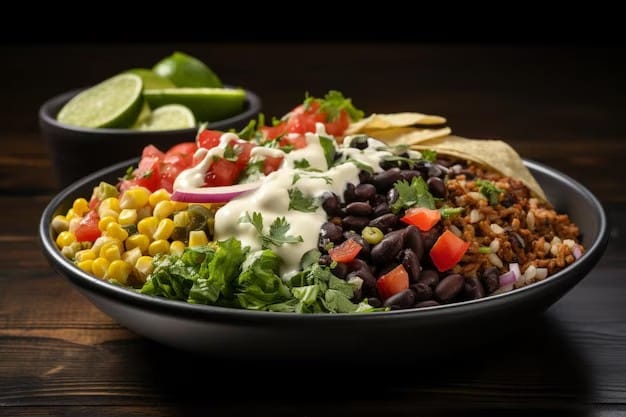
Mexican Chipotle bowl with fresh toppings
Pairing side dishes with your steak can elevate your dining experience. Here are some excellent options:
- Classic Fries – Crispy and golden, a timeless steak companion.
- Sautéed Garlic Butter Mushrooms – Rich, earthy flavours that complement the meat.
- Bacon-Wrapped Asparagus – A savoury, smoky twist on a healthy side.
- Sweet Potato Fondant – Buttery and caramelised for a touch of sweetness.
- Mixed-green salad with Vinaigrette – Light and refreshing to balance the richness of steak.
- Truffled Mashed Potatoes – Creamy and indulgent with an aromatic depth.
- Blue Cheese Sauce – Bold and tangy for an extra layer of flavour.
Varying your sides enhances taste and ensures a well-rounded meal.
Conclusion
Preparing steak for the first time can be complex, and various cuts and cooking techniques are involved. But cooking should be enjoyable. This guide will help you cook steak like a pro by helping you understand each cut, use the right tools, and master the techniques. For a perfect outcome, focus on seasoning, temperature, and proper resting of the steak. Experiment with flavours and methods to create your signature dish. Enjoy your gourmet steak feast at home!
Frequently Asked Questions
How Long Should You Cook a Steak?
The cooking time depends on the type and thickness of the cut and your preferred doneness, including rare steak. A 1.5-inch thick steak typically needs about 2-3 minutes per side for medium-rare, assuming a hot enough pan. However, always use a meat thermometer to determine the exact level of doneness.
What is the 3-3-3 Rule for Steaks?
The 3-3-3 rule is an easy memory tool for cooking a steak to medium rare. It means you cook the steak for three minutes on one side, three on the other, and three minutes to rest before enjoying it.
How Do I Know When My Steak is Ready?
The safest method is to use a meat thermometer to check the internal temperature. Push it into the thickest part of your steak. For rare, the temperature should read 130°F, while it should be 145°F for medium-rare and 160°F for well-donee.
How Long Should I Rest My Steak After Cooking?
The golden rule is to rest your steak for at least 5 minutes or half the cooking time. Resting allows the juices to be re-absorbed, making the meat tender and juicy.








